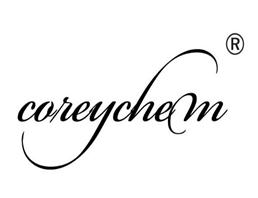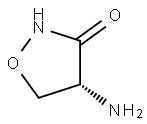
D-Cycloserine
| Price | $1 |
| Package | 1KG |
| Min. Order: | 1G |
| Supply Ability: | 100KG |
| Update Time: | 2019-07-06 |
Product Details
| Product Name: D-Cycloserine | CAS No.: 68-41-7 |
| Min. Order: 1G | Purity: 98% |
| Supply Ability: 100KG | Release date: 2019/07/06 |
AD68
| D-Cycloserine Basic information |
| A second-line anti-TB drug Chemical properties Uses Production process |
| Product Name: | D-Cycloserine |
| Synonyms: | CYCLOSERINE;D-CYCLOSERINE;D-CYCLOSERINE, STREPTOMYCES ORCHIDACEUS;D-4-AMINO-3-ISOXAZOLIDINONE;(R)-(+)-CYCLOSERINE;(R)-4-AMINO-ISOXAZOLIDIN-3-ONE;(R)-4-AMINO-3-ISOXAZOLIDINONE;R(+)-4-AMINO-3-ISOXAZOLIDINONE |
| CAS: | 68-41-7 |
| MF: | C3H6N2O2 |
| MW: | 102.09 |
| EINECS: | 200-688-4 |
| Product Categories: | VARIOUSAMINE;Miscellaneous Biochemicals;chiral;Amines (Chiral);Chiral Building Blocks;Synthetic Organic Chemistry;Amino Acids;Glutamate receptor;Glutamate;Antibiotics;API;SEROMYCIN;amino;Inhibitors;Amino acid;Halogenated Heterocycles ,Thiophenes ,Thiazolines/Thiazolidines |
| Mol File: | 68-41-7.mol |
 |
|
| D-Cycloserine Chemical Properties |
| Melting point | 147 °C (dec.)(lit.) |
| alpha | 111 º (C=5, 2N NaOH) |
| Boiling point | 191.38°C (rough estimate) |
| density | 1.3516 (rough estimate) |
| refractive index | 1.5110 (estimate) |
| storage temp. | −20°C |
| solubility | water: soluble50mg/mL, clear, colorless to light yellow |
| form | powder |
| color | white to off-white |
| Water Solubility | SOLUBLE |
| Sensitive | Air Sensitive |
| Merck | 14,2751 |
| BRN | 80798 |
| CAS DataBase Reference | 68-41-7(CAS DataBase Reference) |
| NIST Chemistry Reference | Cycloserine(68-41-7) |
| Safety Information |
| Hazard Codes | Xn |
| Risk Statements | 5-20 |
| Safety Statements | 38-36/37-24/25 |
| WGK Germany | 2 |
| RTECS | NY2975000 |
| F | 10-23 |
| Hazardous Substances Data | 68-41-7(Hazardous Substances Data) |
| D-Cycloserine Usage And Synthesis |
| A second-line anti-TB drug | D-cycloserine is a broad-spectrum polypeptide antibiotic produced by Streptomyces lavendulae and Streptomyces orchidaceus or synthesized by chemical methods. As white crystals with strong hygroscopic nature, it is soluble in water, slightly soluble in lower alcohols, acetone and dioxane, and hardly soluble in chloroform and petroleum ether. It is relatively stable in alkaline solution and decomposes rapidly in acidic or neutral solutions. As a broad-spectrum antibiotic, cycloserine is inhibitive against most Gram-positive and Gram-negative bacteria, rickettsia and some protozoa, with the exception of Mycobacterium tuberculosis., It is also effective on some of the Mycobacterium tuberculosis strains with tolerance to streptomycin, vinactane para-aminosalicylic acid, isoniazid and pyrazinamide. Cycloserine slightly synergizes with isoniazid in the inhibition of Mycobacterium tuberculosis H37RV, but it neither synergizes nor antagonizes against streptomycin. The product is a bacteriostatic agent, and thus won’t exert bactericidal effect even when increasing the dose or prolonging the action time with bacteria. The Mechanism of D-cycloserine’s antibacterial action is to inhibit the biosynthesis of peptidoglycan of the cell wall. As it is a structural analog of D-alanine, D-cycloserine can competitively inhibit the activities of alanine racemase and D-alanyl-D-alanine synthetase, which are two important enzymes in peptidoglycan synthesis. D-cycloserine shows weak inhibitive activity against Mycobacterium tuberculosis which is only 1/10 to 1/20 that of streptomycin. The advantage of the product is that it is effective on drug-resistant Mycobacterium tuberculosis strains and less likely to induce drug resistance. The product can be used with other anti-tuberculosis drugs in the treatment of tuberculosis caused by drug-resistant Mycobacterium tuberculosis. Cycloserine is a second-line anti-tuberculosis drug. It can inhibit the growth of Mycobacterium tuberculosis, but the effect is relatively weaker than that of the first-line drugs. Its efficacy in tuberculosis treatment is relatively low. Use the drug alone may produce drug resistance, but the resistance occurs slowly compared with that of other anti-tuberculosis drugs. No cross-resistance has been found between cycloserine and other anti-tuberculosis drugs. The mechanism of its antibacterial action is to inhibit the synthesis of peptidoglycan of bacterial cell wall, causing defective in cell wall architecture. The main structural component of the bacterial cell wall is peptidoglycan, which is composed of N-acetylglucosamine (GNAc) and N-acetylmuramic acid (MNAc). N-acetylmuramic acid is linked with pentapeptide and connects N-acetylglucosamine in a reduplicated and alternative manner. The formation of cytoplasmic peptidoglycan precursor may be hampered by cycloserine, as the latter can hinder the racemase and the synthetase of D-alanine, and thus blocks the formation of N-acetylmuramic acid. |
| Chemical properties | Colorless needle or leafy crystals, or amorphous powder; melting point 155-156℃ (decomposition). Soluble in water; slightly soluble in methanol, ethanol, butanol, propylene glycol, isopropyl alcohol and acetone; and hardly soluble or insoluble in toluene, chloroform, ether, pyridine, benzene and carbon disulfide. |
| Uses | Used as an antibiotic medicine in the treatment of drug-resistant Mycobacterium tuberculosis infection. Biochemical research |
| Production process | D-Cycloserine can be obtained through fermentation technique or through direct synthesis. The bacteria used in the fermentation is Actinomyces laven-dulae. The fermentation medium consists of dextrin, dextrose, starch, soybean powder, yeast powder, ammonium sulfate, ammonium nitrate, calcium carbonate, sodium chloride, magnesium sulfate and soybean oil. In the synthesis process, D-cycloserine is obtained from β-aminooxy alanine ethyl ester hydrochloride by reaction with potassium hydroxide in a cyclization reaction. |
| Chemical Properties | White to pale yellow cryst. powder |
| Uses | antibacterial (tuberculostatic) |
| Uses | D-Cycloserine inhibits cell wall biosynthesis (D-Ala peptide bond formation). D-Cycloserine also prevents conversion of D-Ala to L-Ala. D-Cycloserine is an bacteriostatic. D-Cycloserine is an antibiot ic against Gram-negative bacteria. |
Company Profile Introduction
Established in 2014,Career Henan Chemical Co. is a manufacturerspecializing in the sale of fine chemicals.
Mainly deals in the sales of:
Pharmaceutical intermediates
OLED intermediates:
Pharmaceutical intermediates;
OLED intermediates;
You may like
Recommended supplier
| Product name | Price | Suppliers | Update time | |
|---|---|---|---|---|
| $10.00/1kg |
VIP1Y
|
Ouhuang Engineering Materials (Hubei) Co., Ltd
|
2024-04-26 | |
| $40.00/1kg |
Shanghai Chinqesen Biotechnology Co., Ltd.
|
2023-10-31 | ||
| $50.00/1kg |
VIP5Y
|
Hebei Yanxi Chemical Co., Ltd.
|
2023-09-19 | |
| $0.00/25kg |
PNP Biotech Co. Ltd
|
2022-10-19 | ||
| $250.00/1kg |
Hebei Mingeng Biotechnology Co., Ltd
|
2022-05-05 | ||
| $520.00/1KG |
VIP3Y
|
ZhenYiBio Technology Inc
|
2021-12-17 | |
| $10.00/1Kg/Bag |
Hebei Zhanyao Biotechnology Co. Ltd
|
2021-11-19 | ||
| $15.00/1KG |
Zhuozhou Wenxi import and Export Co., Ltd
|
2021-07-11 | ||
| $5.70/1Kg/Drum |
VIP4Y
|
Hebei Guanlang Biotechnology Co,.LTD
|
2021-07-09 | |
| $0.00/1Kg/Bag |
VIP4Y
|
WUHAN FORTUNA CHEMICAL CO., LTD
|
2021-06-05 |
- Since: 2014-12-17
- Address: No.967,15th Floor,Unit 7, Building 1, No.70 of DianChang Road, High-tech Development Zone, Zhengzho
INQUIRY
杨俊青
sales@coreychem.com
sales@coreychem.com




 China
China